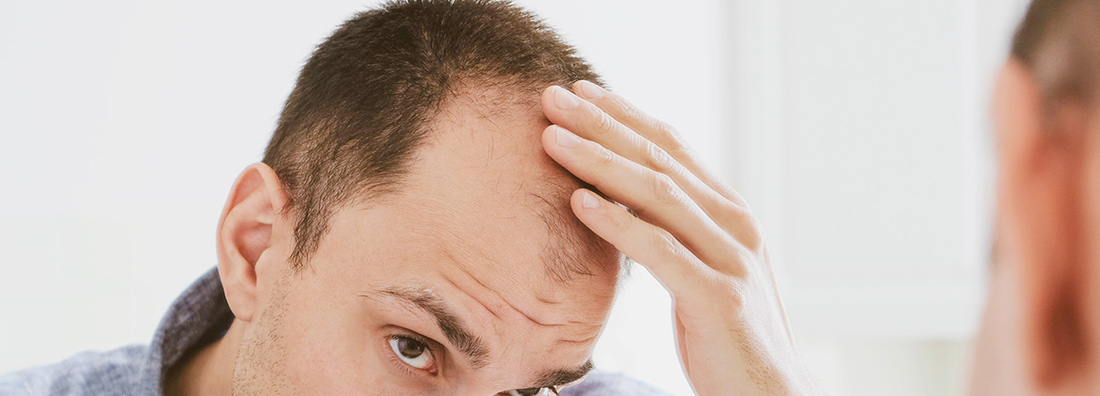
Have you seen more hair in the shower or on the bathroom floor than usual?
Grab a mirror and take a look at your head. If it looks like you’re “going bald,” you may have androgenic alopecia (male pattern baldness).
According to the Cleveland Clinic, male pattern baldness is very common: Half of the men in the world experience hair loss by age 50. If you want to do something about the condition, you have options.
What Is Male Pattern Baldness?
Male pattern baldness is a type of hair loss—specifically, hair loss above the ears. This type develops slowly and most men experience hair loss at some point in their lives. Male pattern baldness, in many cases, is related to alopecia, a disease of genetic origin that affects the production of the hormone testosterone, which is more present in the male body. This anomaly compromises the health of hair follicles, weakening the strands and preventing new hair from appearing. If discovered in the early stages, it can be treated, but in advanced stages, only hair implants can be used to make hair growth happen again.
What Causes Male Pattern Baldness?
You may have heard about the genetics of male pattern baldness. Yes, male pattern baldness is often influenced by the genes you’re born with. There may be a history of it in your family. Interestingly, genes passed down from your mother’s side of the family can also affect your risk. So if you want to get an idea of what you’ll look like when you get older, take a look at your maternal grandfather’s hair.
Symptoms Of Male Pattern Baldness
The symptoms of male pattern baldness are not complex. There are just a few.
First men will notice thinning around the temples, and then this continues to recede toward the back of the scalp. The hair will curl back toward the top of the scalp.
The common pattern that gives male pattern baldness its name is the “M” shape left behind after the baldness has spread. You can see this shape made by the remaining hair if you look at your head from above.
Treatments For Male Pattern Baldness
There are 2 FDA-approved agents for the medical treatment of Androgenetic Alopecia in men. These are topical minoxidil and oral finasteride treatments. Both treatments have a stimulating effect on hair growth and prevent hair loss. The hair loss-stopping effect of medical treatments occurs 3-6 months after the start of treatment, and the effect of providing visible new hair growth occurs 6-12 months after the start of treatment. Continuous treatment is required to ensure maximum effectiveness.
There are also surgical options, such as a hair transplantation. This treatment includes the transplantation of hair follicles from the back of the head to the hairless vertex or frontal area. Modern techniques provide graft survival rates exceeding 90%. This is when your doctor takes skin with healthy hair and moves it to your scalp. You may need more than one transplant before your hair looks natural.
You can also try mesotherapy and biological serum application for your hair loss problem. Since Hera Derma is a dermatology clinic, our specialist physicians perform the necessary medical follow-ups for your hair loss treatment, analyze your results with the necessary laboratory tests, and apply the most suitable treatments that will cure your hair loss. If you notice that you are losing your hair, consider not wasting your time. All of these treatment options require a specialist opinion first, so it is important to call us for an initial appointment and start the treatment that our experts have tailored to your needs as soon as possible.

